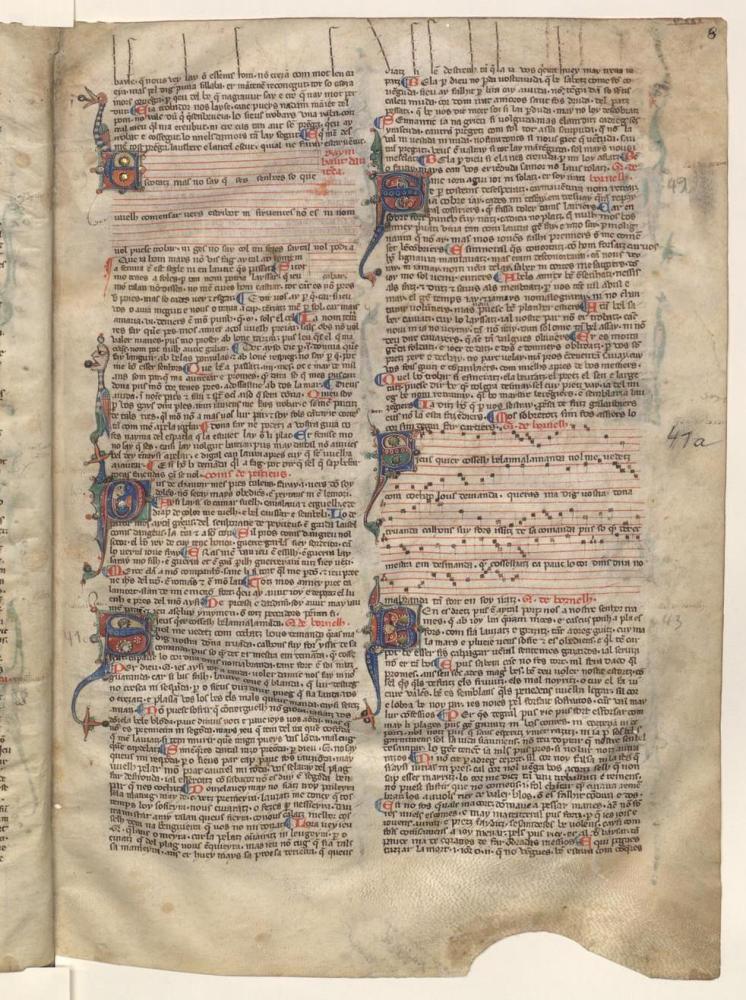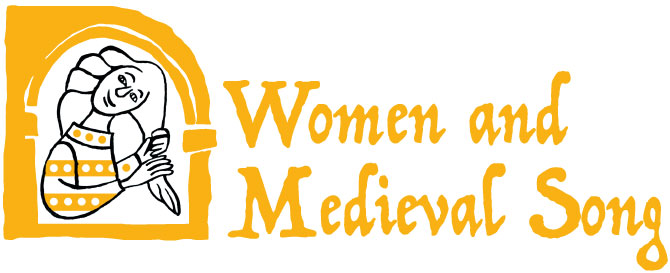
The manuscript tradition of the trobairitz is, unsurprisingly, smaller than that of their male counterparts, and in some cases, certain pieces have been preserved due to their particular typology. For instance, dialogic texts —referred to as tenso or partimen in troubadour lyric poetry— are often found in multiple chansonniers, thanks to the renown of the troubadour with whom the trobairitz engaged. A notable example is the tenso between Guiraut de Bornelh, one of the most influential poets of his time, and Alamanda de Castelnau (S'ie·us quier conseill, bel'amig'Alamanda BEdT 012a,001 = 242,069), which has been transmitted through approximately fifteen manuscripts. Similarly, the intriguing tenso between Gui d'Ussel and Maria de Ventadorn (Guy d'Usel, be·m peza de vos BEdT 194,009 = 295,001), in which the two poets discuss the dynamics of courtly relations between men and women, is preserved in nine chansonniers.
The dialogic nature of women's poetry in medieval Provence, moreover, is not confined to explicitly dialogic genres like tenso or partimen; it also includes brief exchanges of stanzas (coblas), which we can imagine were sent from one court to another through the employment of minstrels. In cases such as the exchanges between Na Lombarda and Bernart Arnaut d'Armagnac, Garsenda de Proença and Gui de Cavaillon or the two trobairitz Almuc de Castelnou and Iseut de Capio, the manuscript tradition has preserved fewer copies. This limited transmission is likely due to the narrower circulation of these texts, which, in all probability, had only local diffusion and achieved less success within the minstrels' repertoire.
However, there are notable exceptions. If we examine the manuscript tradition of the five texts attributed to the Countess of Dia (four love songs and one tenso, possibly exchanged with her fellow poet Azalais de Porcairaigues), it becomes clear that her works have been transmitted through numerous manuscripts, with one text appearing in as many as fourteen. These manuscripts often belong to two distinct groups identified by scholars studying the chronology and geography of ancient troubadour chansonniers. The first group is associated with the stately courts of the Veneto, likely dating back to the 1240s or 1250s, and includes chansonniers identified by the initials A, B, D, I, K, and N (among the most well-known). The second group formed in various regions of the French Midi, with representative examples being chansonniers C and R. Particularly noteworthy is chansonnier H, now preserved in the Vatican Apostolic Library and likely copied in the Veneto at the end of the 13th century. This chansonnier contains numerous texts written by trobairitz, some of which are unique surviving copies, such as the songs of Almuc de Castelnou, Lombarda, and Tibors).
(English translation by Pol Bridgewater)
